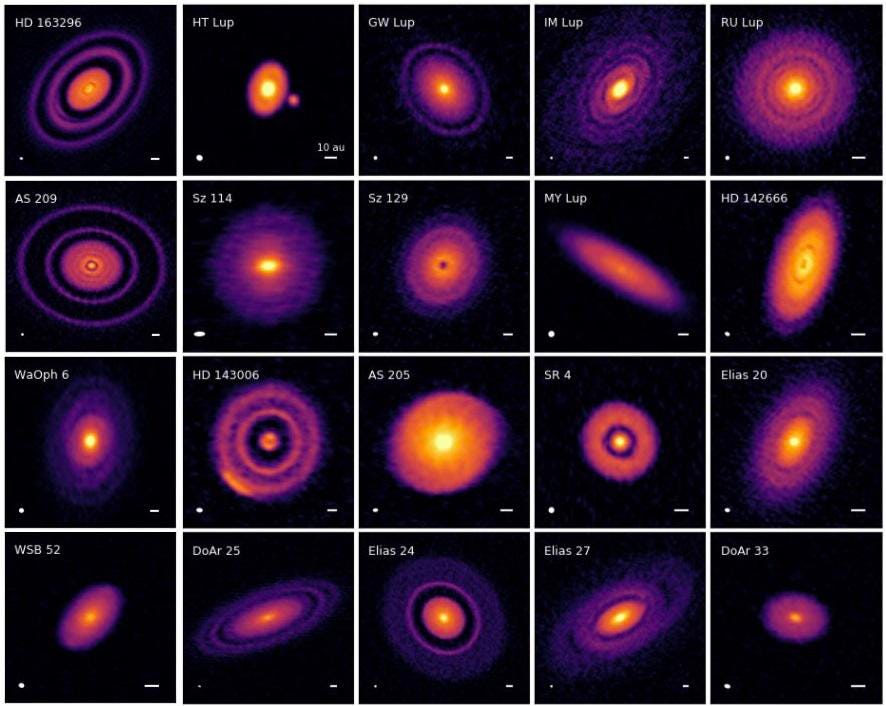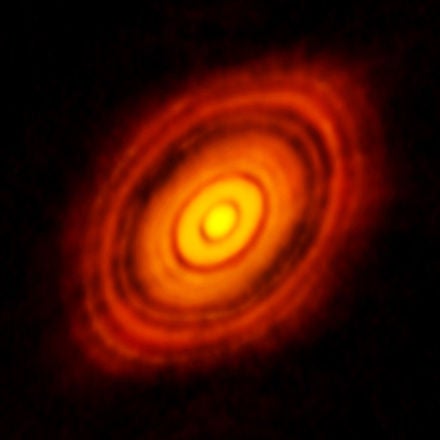With Earth being the only planet currently known to host intelligent life, it begs the question, how exactly did Earth form into the planet it is today?
Planet formation starts with the accumulation of dust and gas that forms into disks. These dust particles are about 1 micron in size (a human hair is approximately 70 microns) and over millions of years these particles accumulate to form planets that are thousands of miles wide! As scientists, we want evidence of this. We can do this by looking into our own solar system and observing objects that are in our sky.

Scientists theorize that planet formation actually occurs within the disks of accumulated dust. Using technology like the ALMA Radio Telescope, it becomes possible to capture high resolution pictures, like the one pictured below, of protoplanetary disks hundreds of light years away to understand how early planet formation might behave and look like.

No exoplanet system we have observed matches our own Solar System in its architecture; planetary mass, size, and orbital structure are all quite different. Is it possible we may be the only solar system of our kind? Find out in Dr. Erin Cox’s First Friday lecture linked below!
Boise State Physics First Friday Astronomy – Dr. Erin Cox – April 2022